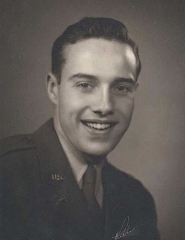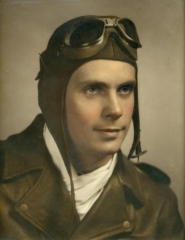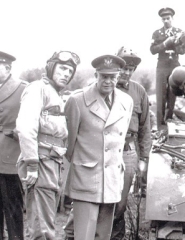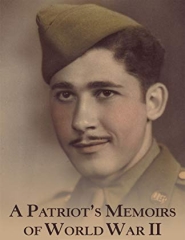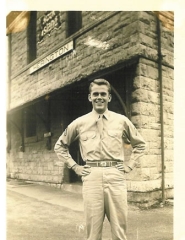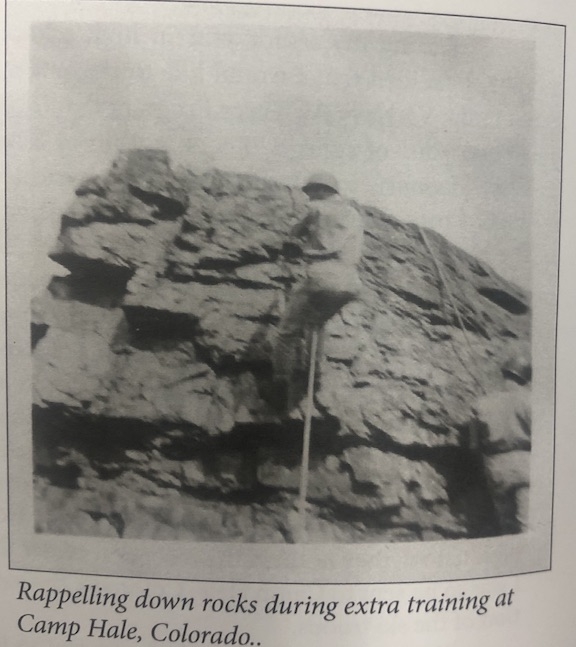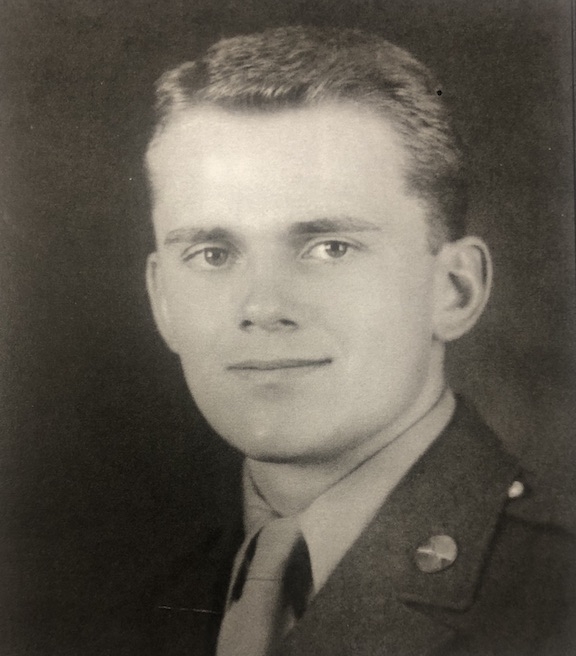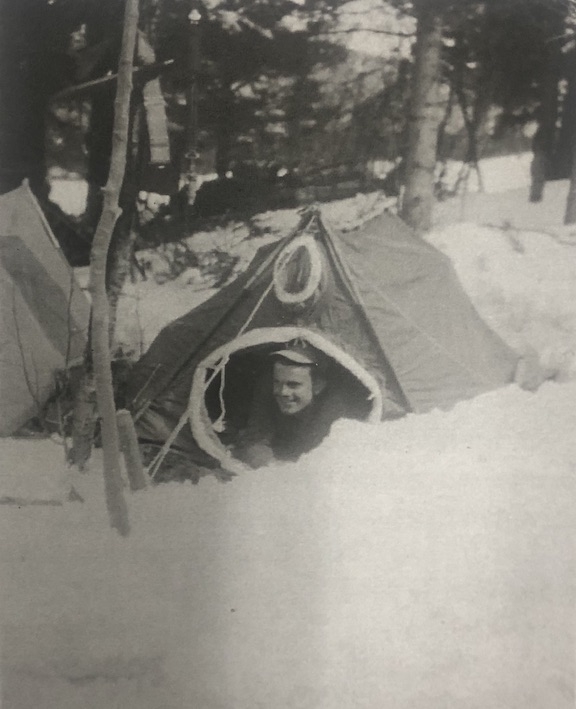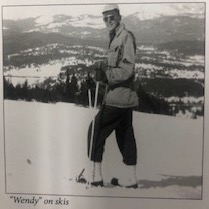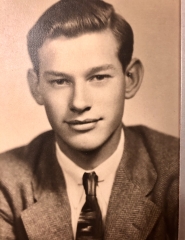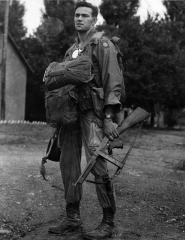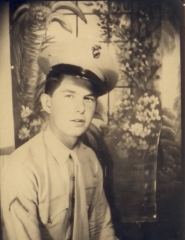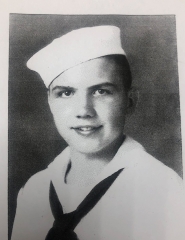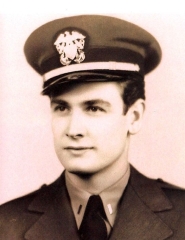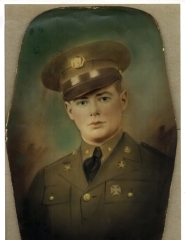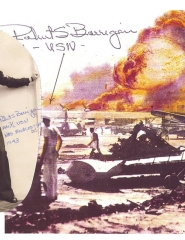I was born in LA, raised in El Centro, CA and delivered papers until 1939. Dad guessed we were about to enter the war during my junior year and suggested I join the Navy then, rather than being drafted. Enlisting on a Kiddy Cruise (I was just 17), I was sent to the San Diego Naval Training Station where I was assigned to the USS Tangier. We sailed our maiden cruise to Honolulu. The Tangier was to go on maneuvers with the fleet on Dec 7th or 8th so the ship's two seaplanes were sent to Ford Island to await its return, and I and several shipmates were selected to baby sit them. On Dec. 7th I was awakened by a large explosion which shook the bunkroom on the second floor that faced Diamond Head. I jumped up, feeling a second explosion as I ran to the window. I then felt several smaller explosions and saw an aircraft with large red balls on the wings crossing low in the hangar area from south to north, banking around and climbing. We put on our white pants, shoes and hats and ran downstairs. As I came down the stairway, men were breaking out all the glass in the doors and windows. A boatswain's mate shouted for me and several others to keep low and follow him. Aircraft machine gun tracers were going past us and we could hear explosions and breaking glass. Led to the armory, an old Chief grabbed me, threw two belts over my shoulder, a rifle and a gas mask and told me and another seaman to go up on the roof of the Operations Building. I remember running all the way there and up the narrow stairway to the roof which was about 20' x 30' with a 24” or 30” wall around it and a small permanent shed which held cleaning materials. Except for the area in front of us, we had a view of everything up to the fuel dumps and the hospital on the hills. Planes were coming across the water from the Navy Yard, flying low, dropping bombs and torpedoes on the West Virginia, California, and Arizona, flying directly over us strafing, then doing the same to the Tangier, Utah, and Raleigh, making a high turn over Beckoning Point and the Pan Am base and returning. I saw only two aircraft hit and go down. I saw the USS Shaw get hit on its bow in dry-dock while we loaded our rifles and watched the waves of aircraft coming. As they approached, we went behind the shed, fired as they passed directly overhead, ran to the opposite side, and fired again. I remember saying we could have done better with hand grenades as they were so low we could see the pilot and man in the rear. Two Marines came, uncrated a Browning water-cooled machine gun in about 2 minutes and fired it without water until the barrel was so hot the tracers were corkscrewing out. We shot all our ammo at the aircraft right over our heads and the marines fired their gun until it froze. I saw the Nevada get under way and try to move out, the Shaw took a direct hit and exploded, and the Oglala rolled over. Whaleboats, captain's gigs, and the ferry were strafed and people were burning in the water. I saw bombs dropped on the Arizona and felt the explosions. Relieved at about 1100, our ears were ringing and the roof deck was covered with small pieces of paper. The California was just below us, lying sideways, and firing its large guns at an angle towards us. As a result, we had red marks over our right side, arms and faces from the shells’ wadding hitting us. Not really hungry, but at the mess hall because I was told to eat, I saw men in everything I could think of; dirty clothes, shorts to Admiral's coats, some wounded, but no one I knew. Sick and frightened for the first time, I looked back against the wall. Under the tables were several rows of dead men. As I looked at the cold chicken, orange juice and dead men, I left the mess hall without eating. To this day, I still cannot eat cold chicken. Our two aircraft were parked in front of the second hangar from the one that had been hit, and we began working to make one of them flyable. No more than three or four hours had passed. The rest of the day we had several false alarms of air raids. As it grew dark, we became more apprehensive since the rumors were that the Japanese transports would be landing at night. The next day we went back to work on our aircraft. I reported back to our ship regarding the damage. Capt. C.F. Sprague told me to forget the aircraft and tell everyone to get back aboard NOW. Our ship departed Pearl Harbor with a large Naval task force. We were supposed to reinforce the Marines at Wake Island. However, we were delayed by refueling problems with the USS Saratoga and a Destroyer in our group. As a result, Wake Island was taken over by the Japanese. That delay most likely saved the Tangier crew. Later, we went back out in the Pacific to attend to various seaplane duties. I was re-assigned to NAS Anacostia, DC, in April 1943 until March 1947 as a 2nd Class Aviation Metalsmith. I then joined the Navy Reserves, re-assigned to NARTU Anacostia, where I made First Class then changed my rate. To Aviation Electronics Tech. First Class. I retired from the US Navy in 1960 and went to work for the FAA in Washington, DC, and Oklahoma City. I retired from the FAA in 1988 with total government service of 48 years in Naval and civil aviation.
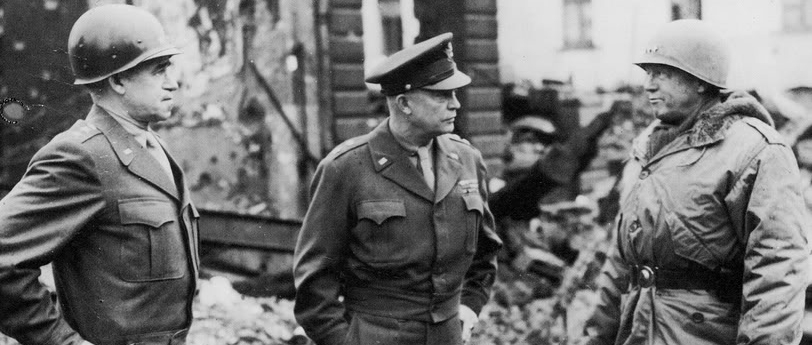
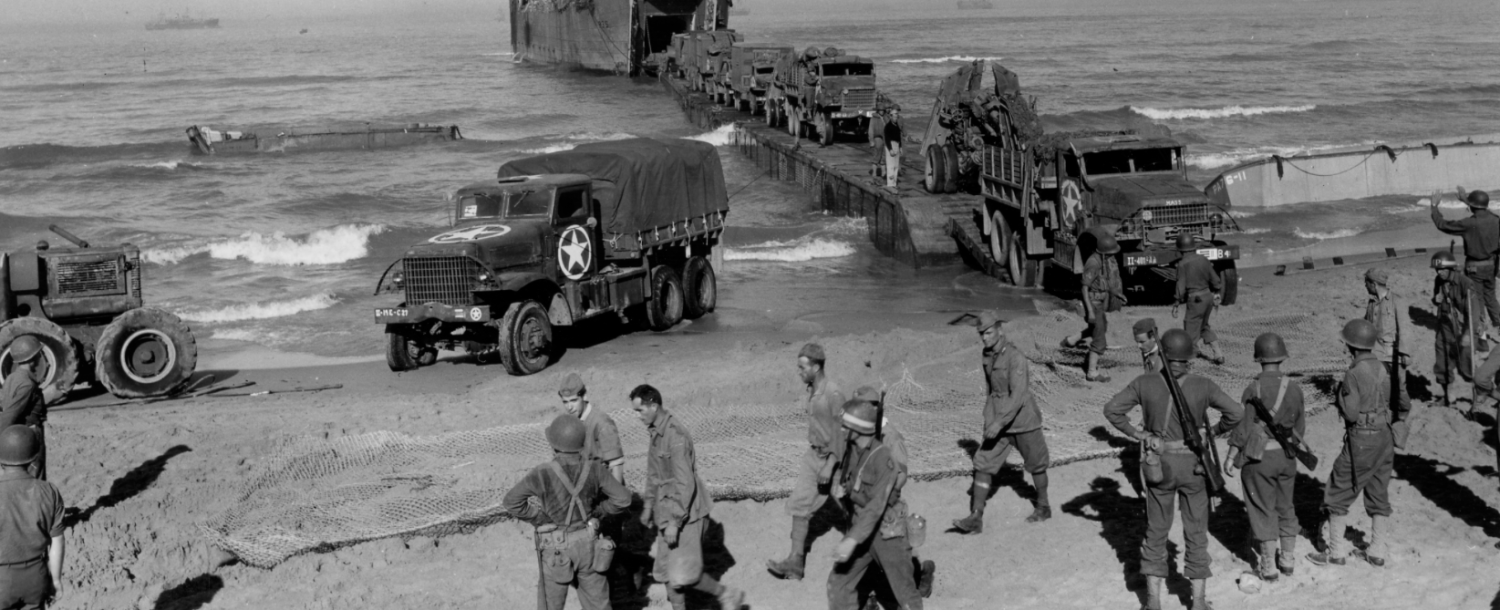
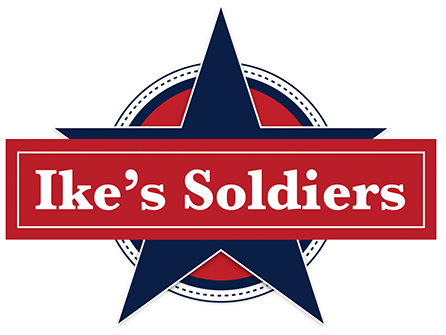
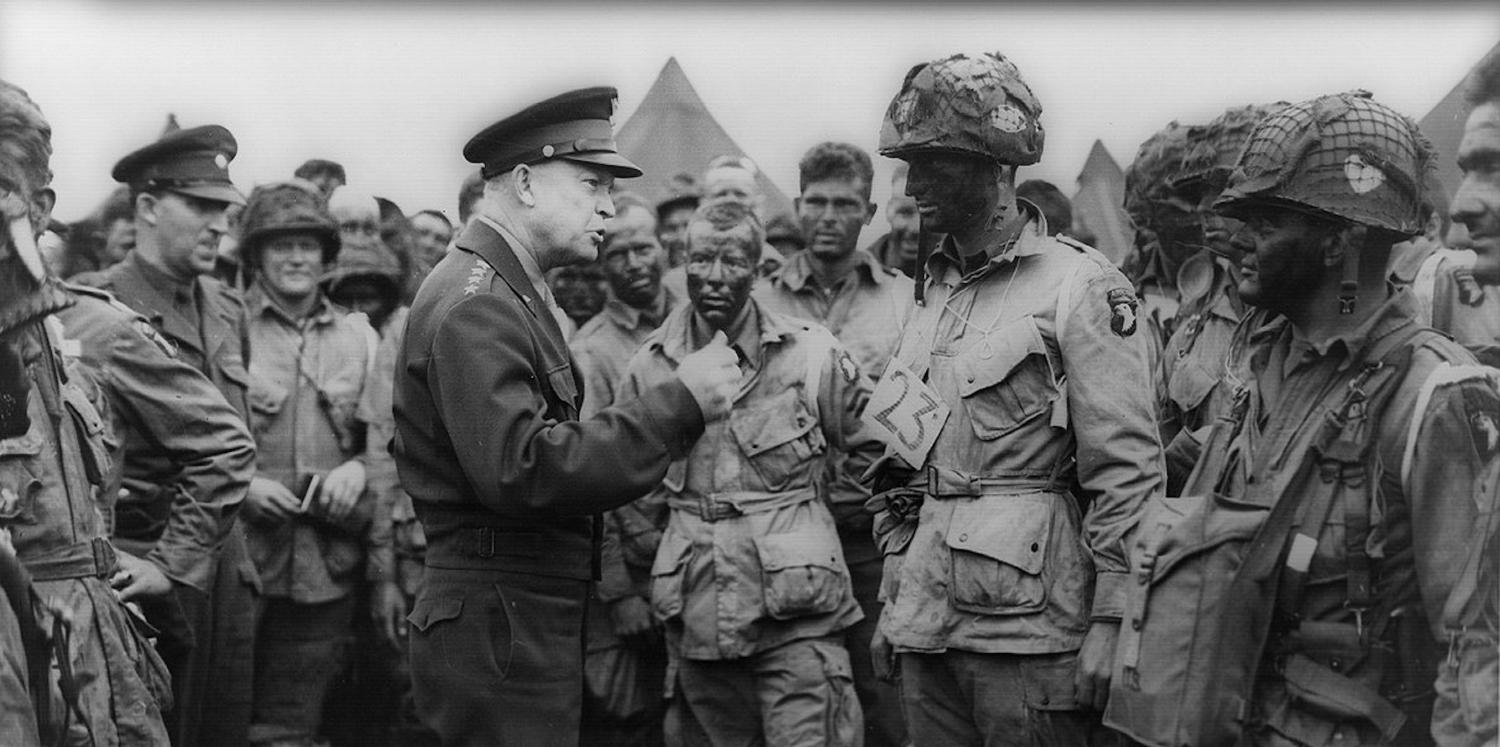

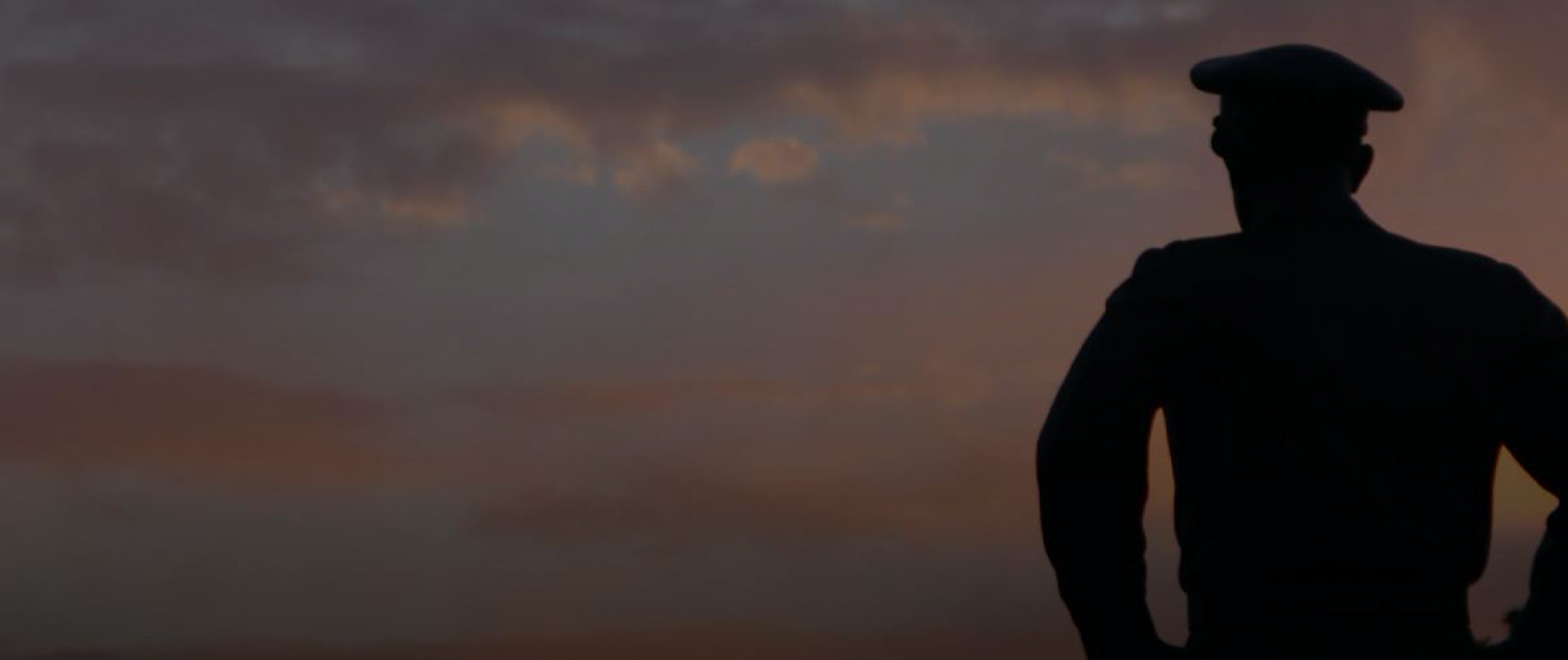

 Eisenhower Foundation
Eisenhower Foundation
